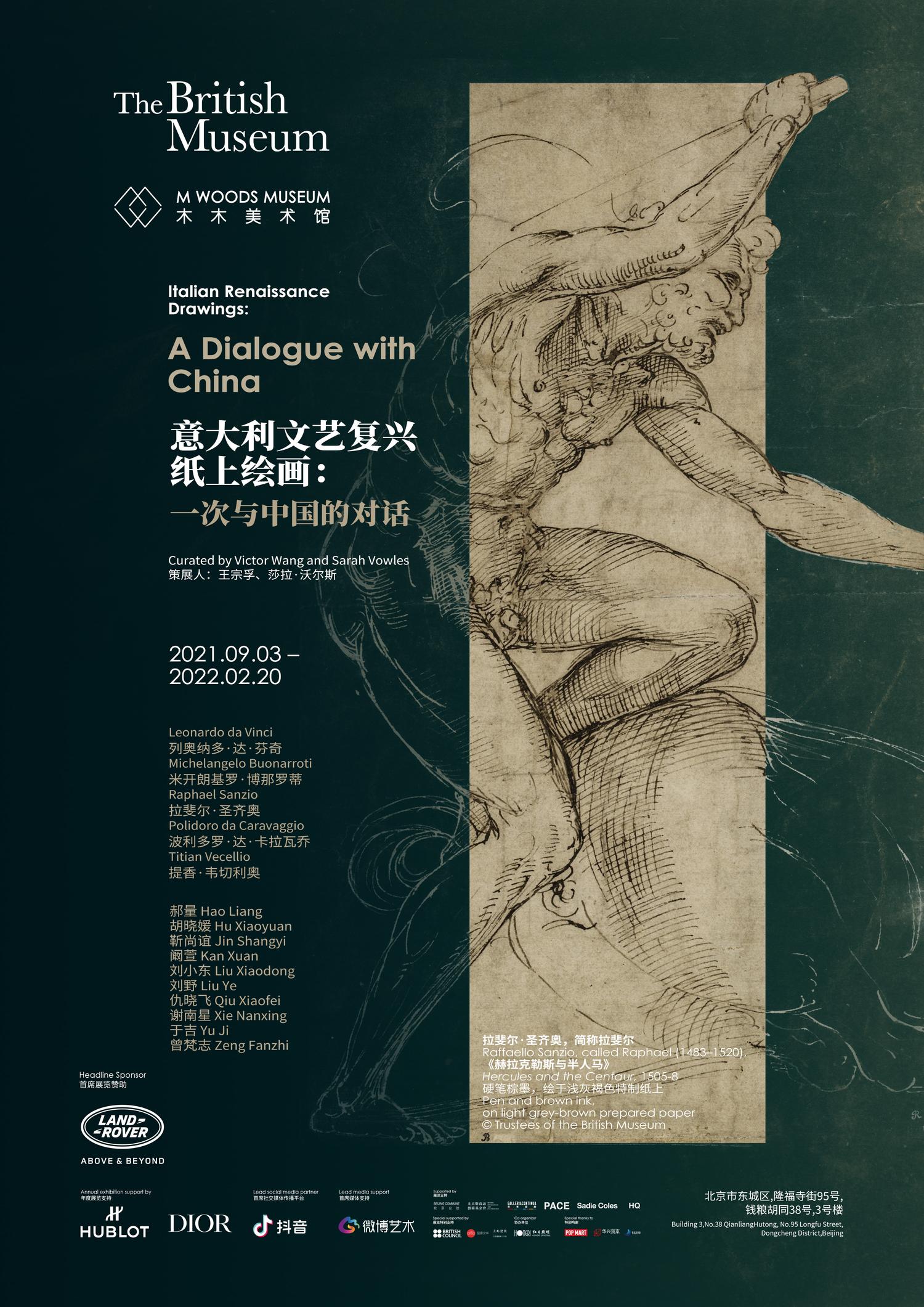
Italian Renaissance Drawings: A Dialogue with China
Works from the British Museum Collection by:
Leonardo da Vinci, Michelangelo, Titian, Raphael, Polidoro da Caravaggio, Lorenzo di Credi, and more.
In dialogue with artists:
Hao Liang (郝量), Hu Xiaoyuan (胡晓媛), Jin Shangyi (靳尚谊), Kan Xuan (阚萱), Liu Xiaodong (刘小东), Liu Ye (刘野), Qiu Xiaofei (仇晓飞), Xie Nanxing (谢南星), Yu Ji (于吉), Zeng Fanzhi (曾梵志)
Curated by Victor Wang, Artistic Director and Chief Curator, M WOODS, and Sarah Vowles, Smirnov Family Curator of Italian & French Prints & Drawings, British Museum.
M WOODS Hutong
3 September 2021 – 20 February 2022
The presentation of this exhibition is a collaboration between the British Museum and M WOODS Museum
 Installation view, Italian Renaissance Drawings: A Dialogue with China, M WOODS Hutong, courtesy M WOODS, Beijing, 2021
Installation view, Italian Renaissance Drawings: A Dialogue with China, M WOODS Hutong, courtesy M WOODS, Beijing, 2021
M WOODS and the British Museum (U.K.) are proud to present 'Italian Renaissance Drawings: A Dialogue with China’, the first collaborative exhibition between the British Museum and an independent, not-for-profit art museum in China.
The key focus of the exhibition is to enlighten visitors about Italian Renaissance drawings, and it will include examples by many of the great Renaissance artists, including Leonardo da Vinci, Michelangelo, Titian and Raphael, taken from the historic collections of the British Museum. For the first time in their history, these works will be placed in dialogue with contemporary art from China to highlight the important trans-temporal relationships between the Western Renaissance and China.
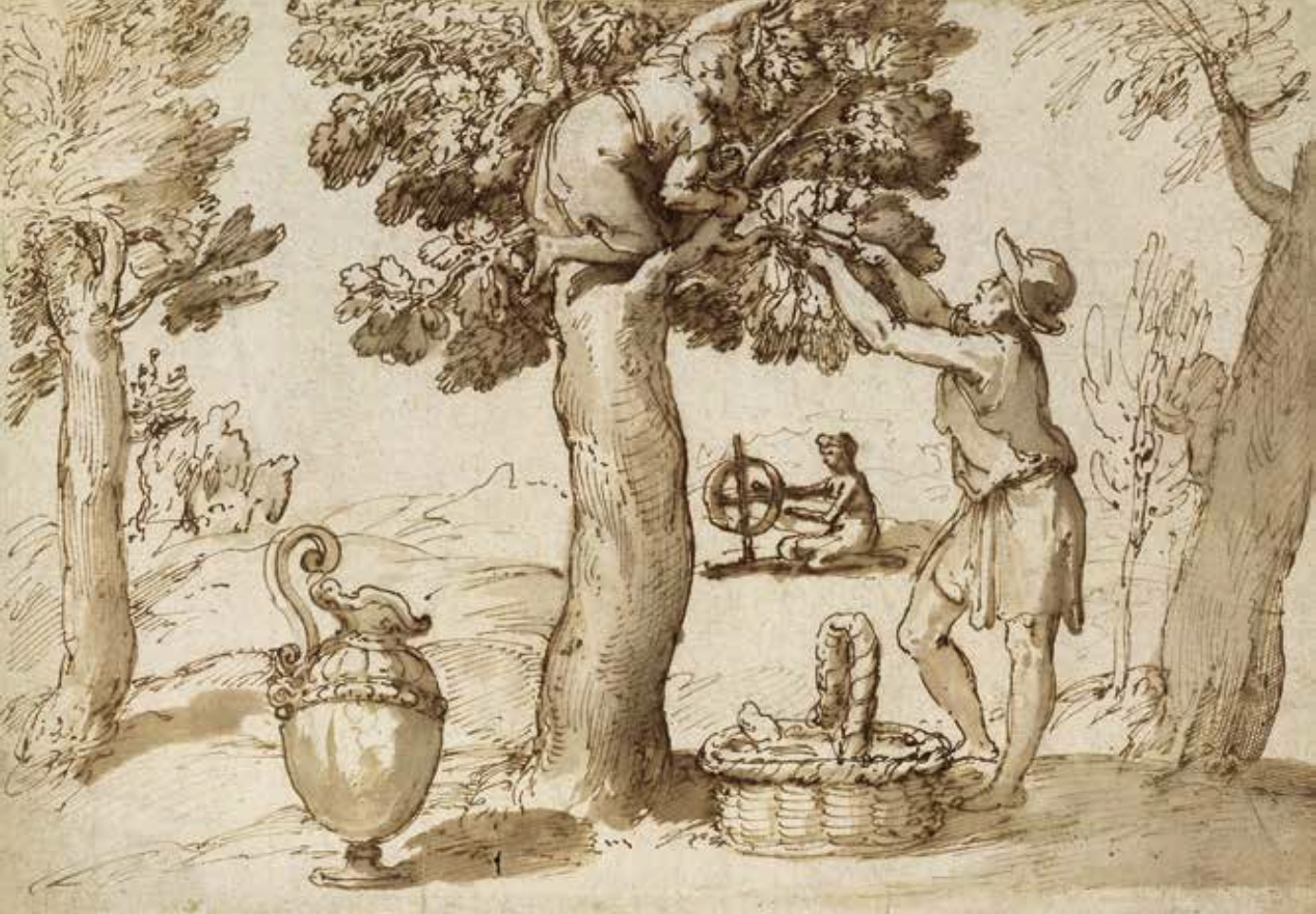
Taddeo Zuccaro (1529–1566),The cultivation of silkworms
1564–66. Pen and brown ink, with brown wash, over black chalk. This is a preparatory drawing for a fresco at Palazzo Farnese, Caprarola. The finished fresco is in the former dressing room of Cardinal Farnese, which was decorated with scenes showing the textile industry. Here, Taddeo shows farmers cutting leaves from a mulberry tree to feed to their silkworms. Developed from processes established in China, this produced the finest and most sought-after silk, which was a much admired luxury product in Renaissance Italy.
 Installation view, Italian Renaissance Drawings: A Dialogue with China, M WOODS Hutong, courtesy M WOODS HUTONG, Beijing, 2021.
Installation view, Italian Renaissance Drawings: A Dialogue with China, M WOODS Hutong, courtesy M WOODS HUTONG, Beijing, 2021. Installation view, Italian Renaissance Drawings: A Dialogue with China, M WOODS Hutong, courtesy M WOODS HUTONG, Beijing, 2021
Installation view, Italian Renaissance Drawings: A Dialogue with China, M WOODS Hutong, courtesy M WOODS HUTONG, Beijing, 2021M WOODS’ Artistic Director and Chief Curator, Victor Wang, has worked closely with the British Museum’s Smirnov Family Curator of Italian & French Prints & Drawings, Sarah Vowles, to consider the possibility of a Renaissance beyond Europe, and introduce a cross-cultural global perspective on these historical works on paper.
‘Renaissance’ is the French translation of the Italian word rinascimento, meaning ‘rebirth’. It refers to the cultural and intellectual flowering that took place in Italy in the 15th century before it spread north of the Alps across Europe[1]. However, the Italian Renaissance was not only fascinated by Greco-Roman antiquity, it was also a larger exchange of ideas, techniques, and perspectives that would go on to influence other parts of the world.

From left to right in image, Xie Nanxing, ‘Spice No. 7’, 2017, Gentile Bellini (1429–1507), ‘A Turkish woman’, 1480, installation view, Italian Renaissance Drawings: A Dialogue with China, M WOODS, courtesy M WOODS HUTONG, Beijing, 2021
From an expanded historiographical perspective on both the period and the ideas that were developed, several important relationships can be revealed between the traditional European Renaissance and the modernization of China, as both an intellectual and cultural project. Local and international scholars have discussed the influence of the Renaissance on modern China in terms of the country’s nation-building and reformational efforts, providing a framework for understanding the modernising forces of the early 20th century, a period that concluded the country’s millennium-old imperial rule, as well as the country’s cultural continuity with the Song (960–1279) and Ming Dynasties (1368-1644), which denote, amongst other things, canonical periods of high cultural tradition that are important periods of reference in the formation of China’s modern identity. Alternatively, by situating these Italian Renaissance works within a contemporary art framework, we allow for a re-orientation and re-appraisal of these historical drawings from a different cultural context and from a contemporary non-European perspective.



Image left: Zeng Fanzhi, Untitled, 2020, Drawing
Image centre, Zeng Fanzhi, Untitled, 2020, Drawing
Image right: Michelangelo Buonarroti (1475–1564), 1519–1523, Black chalk

Installation view, Italian Renaissance Drawings: A Dialogue with China, M WOODS Hutong, courtesy M WOODS HUTONG, Beijing, 2021.

Installation view, Italian Renaissance Drawings: A Dialogue with China, M WOODS Hutong, courtesy M WOODS HUTONG, Beijing, 2021.
Some of the themes that characterise Renaissance art are brought together in the selection of drawings, which date from between 1470 and 1580 and represent artists working across the Italian peninsula. The works in the exhibition have been divided into six thematic sections: The Human Figure, Movement, Light, Costume and Drapery, The Natural World, and Storytelling. The exhibition then explores how artists both in the Renaissance and in China brought life, form, and dynamism to their compositions through the study of these themes such as movement, light and shade, and costume. This presentation will bring together the artist’s understanding of the earlier themes into a conversation, while opening up a new space that also considers the parallels and tangents between these perspectives and histories. The work of influential Chinese scholars such as Jiang Fangzheng, Hu Shi, Liang Sicheng and Fu Lei, who were key figures in these cultural movements and national reforms, will be represented in specific archival materials, while contextual information on the importance of drawing as a conceptual and explorative tool for Renaissance artists will also be on display.
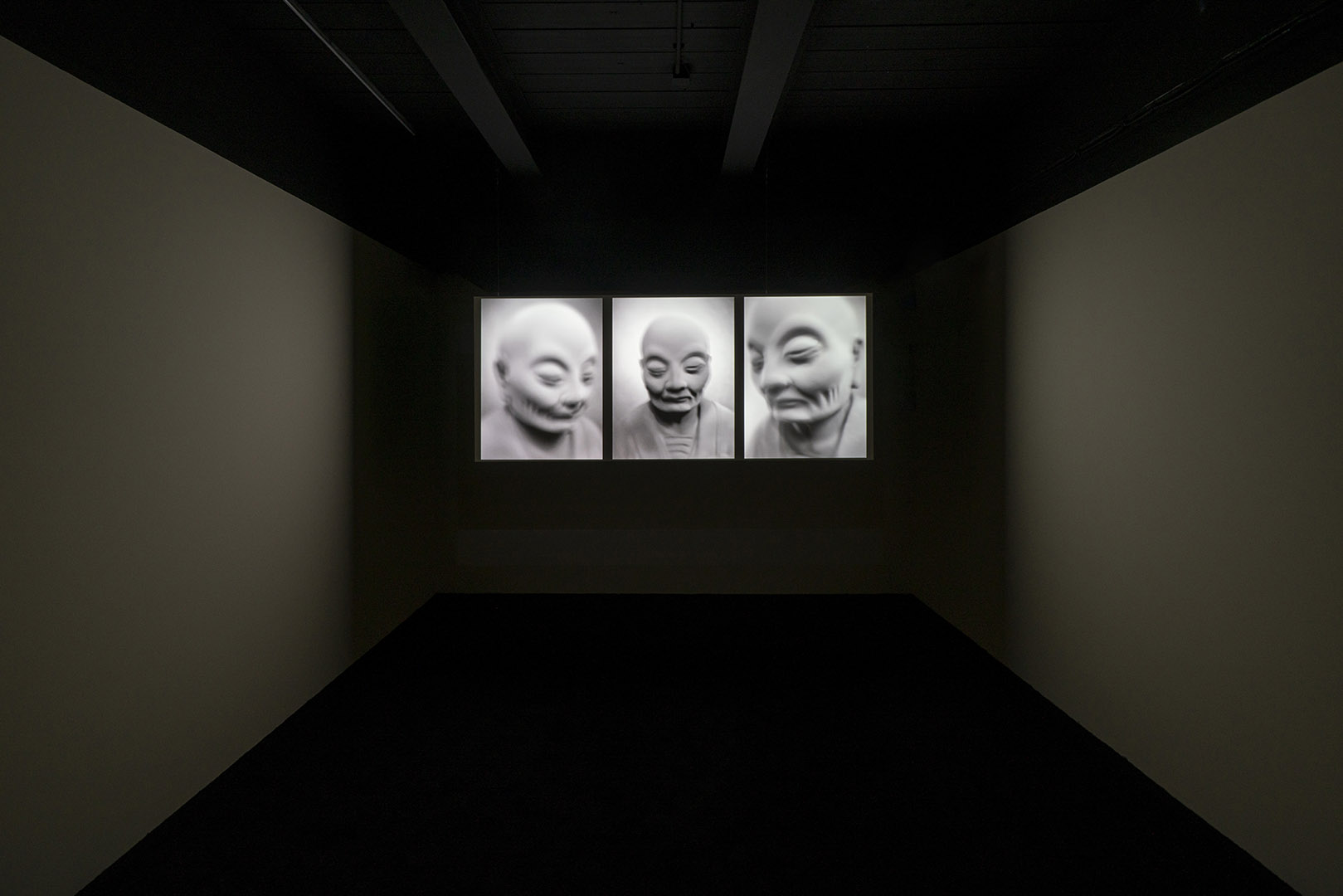
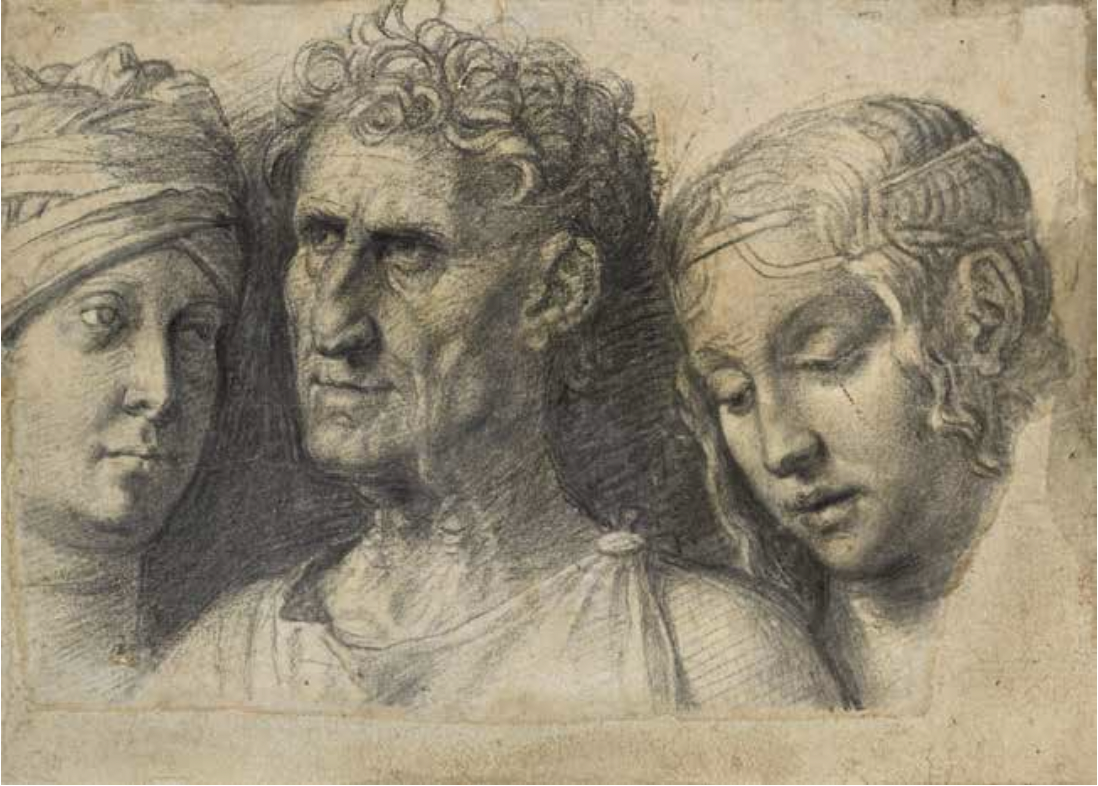
Image left: Installation view, Kan Xuan, ‘A Monk’, 2005, Italian Renaissance Drawings: A Dialogue with China, M WOODS Hutong, courtesy M WOODS HUTONG, Beijing, 2021.
Image right: Three head studies, Attributed to Giovanni Bellini (about 1430–1516), Three head studies. 1500–16. Black chalk, the sheet extensively made up along the lower margin

Installation view, Italian Renaissance Drawings: A Dialogue with China, M WOODS Hutong, courtesy M WOODS HUTONG, Beijing, 2021.


Left image: Yu Ji, Flesh in Stone-Ghost #2, 2018
Right image: Polidoro da Caravaggio (about 1500–1536/37),Two studies of a man with arm raised, About 1530–40. Black chalk
Italian Renaissance art was dominated by the desire to accurately represent the human form. The aim was to engage the viewer in the narrative shown in the painting, and to do this figures had to be naturalistic and convincing.
To help artists develop their knowledge of the human body, workshop practice increasingly focused on drawing the male nude from life. As more ancient sculptures were discovered, artists also began to draw from the original statues or from plaster casts, trying to emulate the muscular power of classical art. Alongside these drawings of the whole body, artists would make detailed head studies of friends and colleagues of various ages, which could later be used to represent saints, mythological characters or classical heroes in finished works. More generic character types could sometimes be exaggerated into caricature, as can be seen in the extravagant heads imagined by Leonardo da Vinci. Here a deep understanding of the human form provides a springboard to a more creative exploration of personality and character.
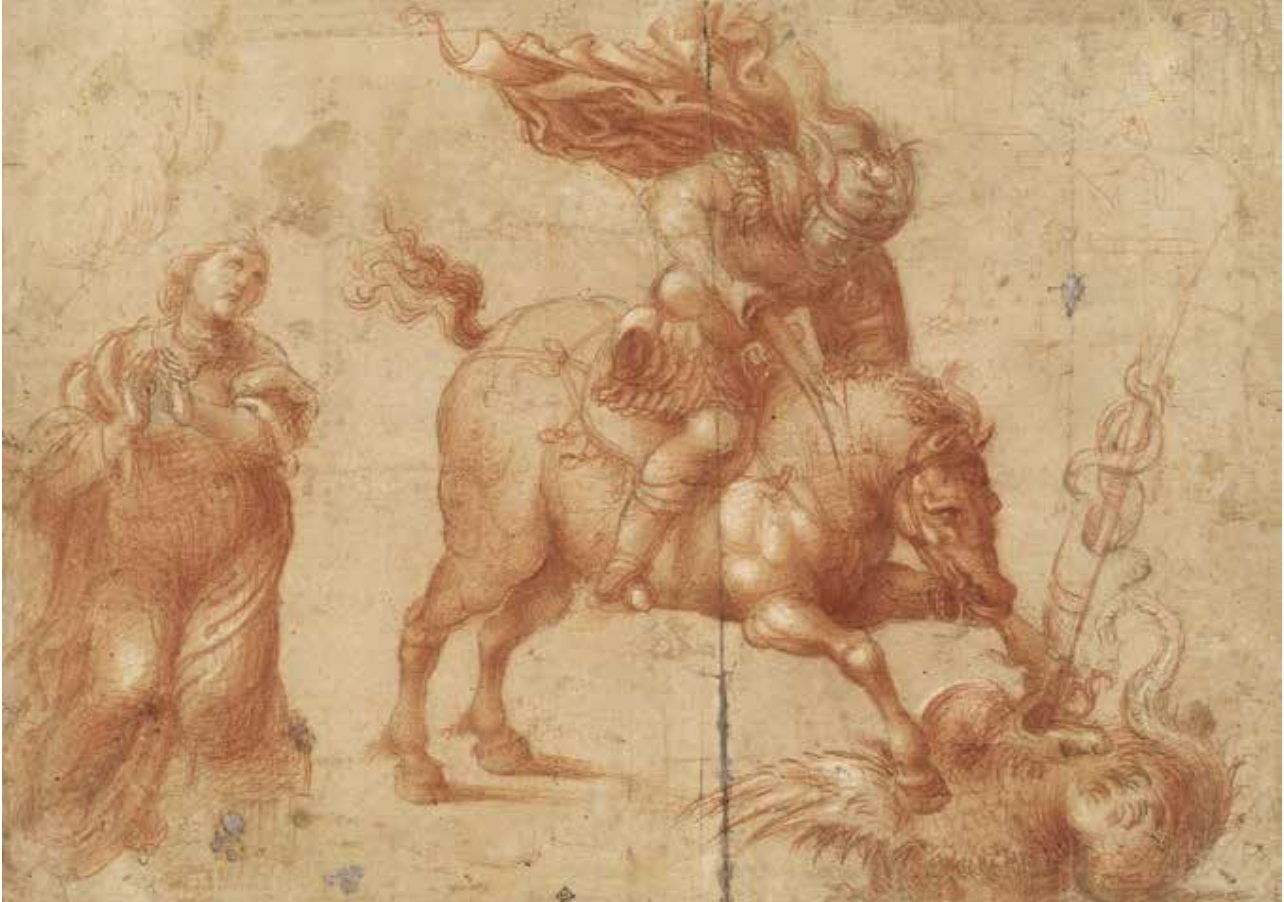

Left image: Giovanni Antonio Bazzi, il Sodoma (1477–1549)
Red and white chalk, over black chalk, on light brown paper
Right image: Liu Xiaodong 2 Diary of an Empty City 2
2015. Oil on canvas

Installation view, Italian Renaissance Drawings: A Dialogue with China, M WOODS Hutong, courtesy M WOODS HUTONG, Beijing, 2021.


Image left: (foreground in image), Hu Xiaoyun, Spheres of Doubt III, 2021,
Image Right, Francesco Salviati (1510–1563), Drapery study for a seated woman,About 1556, installation view, Italian Renaissance Drawings: A Dialogue with China, M WOODS, courtesy M WOODS HUTONG, Beijing, 2021.

From left to right in image, (left) Michelangelo (1475–1564), The Annunciation
1542–46 , Gentile Bellini (1429–1507), (right) Liu Ye, Book Painting No.7, 2015,
installation view, Italian Renaissance Drawings: A Dialogue with China, M WOODS, courtesy M WOODS HUTONG, Beijing, 2021.
Hartwig Fischer, Director of the British Museum said, “The British Museum is delighted to be working with M WOODS on this exciting collaborative project. The Museum is absolutely committed to sharing the collection as widely as possible with museums across the world. Our exhibition partnerships in China have always proved very popular with audiences and I will be fascinated to see how audiences in Beijing respond to the show.”
--
VICTOR WANG
All content property of © Victor Wang 2009 - 2024 All rights reserved -- BEIJING - LONDON.
All content property of © Victor Wang 2009 - 2024 All rights reserved -- BEIJING - LONDON.